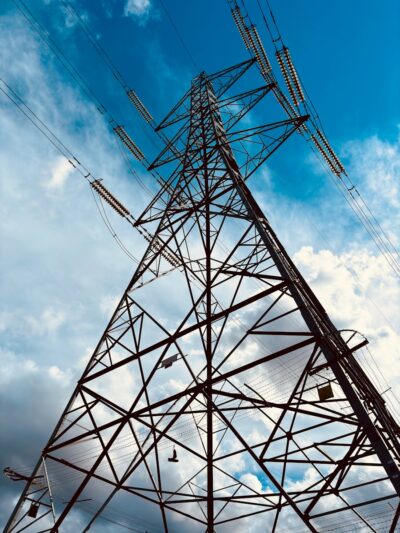Power transmission utilities, the backbone of the global energy system, are undergoing a radical transformation. This sector is no longer just about moving electricity from point A to B; it’s now at the center of the clean energy transition, digital innovation, and the urgent need to build more resilient grids. As the world moves toward decarbonization and electrification, the role of power transmission becomes more critical than ever, presenting both immense challenges and unprecedented opportunities.
Market Overview and Investment Trends
The global power transmission and distribution (T&D) market is a massive and growing industry. In 2024, the market size was valued at an estimated USD 386.59 billion and is projected to reach over USD 500 billion by the early 2030s, growing at a CAGR of over 4%. This growth is primarily fueled by:
- Rising Global Electricity Demand: Urbanization, industrialization, and the electrification of transportation and buildings are all driving a significant increase in electricity consumption, particularly in developing economies.
- Renewable Energy Integration: The massive shift toward renewable sources like wind and solar necessitates substantial investments in T&D infrastructure to connect remote generation sites to population centers and manage the intermittent nature of these sources.
- Grid Modernization: Aging infrastructure in developed nations requires urgent upgrades to enhance reliability, resilience, and efficiency.
The Asia-Pacific region currently dominates the market, holding a significant share of over 40% in 2024. This is driven by large-scale projects in countries like China and India, which are rapidly expanding their grids to meet the needs of their vast populations and booming economies. North America is also a key player, with major investments in grid modernization and clean energy integration.
Key Industry Drivers and Challenges
The power transmission industry is at a crossroads, navigating a complex landscape of drivers and obstacles.
Drivers
- Clean Energy Transition: The global push for a net-zero future is the single most significant driver. Governments are incentivizing private sector investment through policies and funding to build out transmission lines that can handle the influx of renewable energy.
- Technological Advancements: The integration of smart grid technologies, IoT sensors, and AI-driven analytics is transforming traditional grids into intelligent, responsive networks. These technologies enable real-time monitoring, predictive maintenance, and better management of power flow.
- Electrification of Everything: The widespread adoption of electric vehicles (EVs) and other electrified technologies is putting new pressure on the grid, demanding significant capacity and infrastructure upgrades.
Challenges
- Aging Infrastructure: Many grids, especially in North America and Europe, are decades old and weren’t designed to handle modern energy demands or two-way power flow from distributed energy resources.
- Grid Congestion and Intermittency: The uneven distribution of renewable energy generation (e.g., solar farms in sunny regions) can lead to grid congestion. The intermittent nature of these sources also poses a challenge for maintaining a stable power supply.
- High Capital Investment: Building or upgrading transmission infrastructure is a costly and capital-intensive endeavor, often requiring multi-billion dollar investments and facing significant regulatory hurdles.
- Cybersecurity Risks: As grids become more digitalized and interconnected, they become more vulnerable to cyberattacks. Protecting this critical infrastructure is a major and ongoing challenge.
The Future Grid: Trends to Watch
The future of the power transmission industry is dynamic and filled with innovation. Here are some of the most prominent trends:
- High-Voltage Direct Current (HVDC) Transmission: HVDC is gaining momentum for long-distance power transmission. It’s more efficient than traditional AC systems over long distances, making it ideal for connecting remote renewable energy hubs to urban centers.
- Distributed Energy Resources (DERs) & Microgrids: The rise of DERs like rooftop solar panels and local battery storage is shifting the energy landscape from a centralized model to a more decentralized one. Microgrids, which can operate independently, enhance grid resilience and reliability.
- Digital Substations and Automation: New substations are being built with digital sensors and smart devices to quickly detect issues, reduce operational costs, and improve efficiency. Automation solutions are also being implemented to enable rapid and secure sectionalization of transmission lines during outages.
- Energy Storage Systems: Large-scale energy storage, particularly battery storage, is becoming essential for managing the intermittency of renewables. These systems can store excess energy during off-peak hours and release it during high-demand periods, ensuring grid stability.
- AI and Predictive Analytics: Utilities are increasingly using artificial intelligence to forecast demand, optimize power flow, and predict equipment failures before they happen, leading to fewer blackouts and increased efficiency.
Key Global Players
The power transmission and distribution sector is dominated by a mix of large utilities, technology companies, and engineering, procurement, and construction (EPC) firms. Some of the major players include:
- Hitachi Energy: A global leader in power and grid technology, offering a wide range of products, systems, and services.
- Siemens Energy: A key player in the energy transition, providing solutions for power generation, transmission, and industrial applications.
- General Electric (GE) Grid Solutions: A major provider of T&D equipment and software, focusing on grid modernization.
- Power Grid Corporation of India (PGCIL): A state-owned company and one of the world’s largest transmission utilities, with a massive network in India.
- Adani Energy Solutions (formerly Adani Transmission): A leading private-sector player in India, focusing on expanding its transmission and distribution network.
- Quanta Services: A major player in the North American market, specializing in large-scale infrastructure projects.



